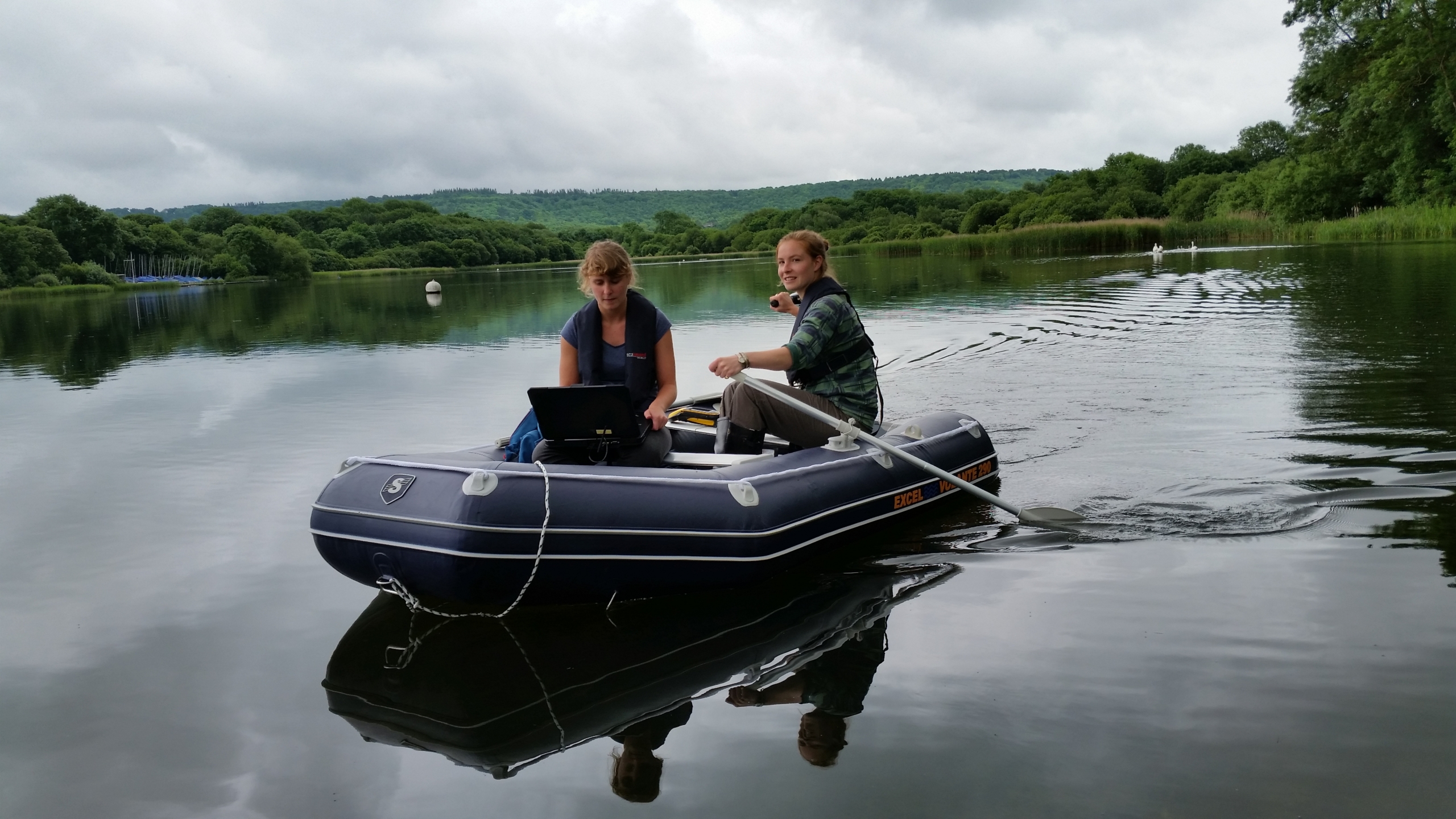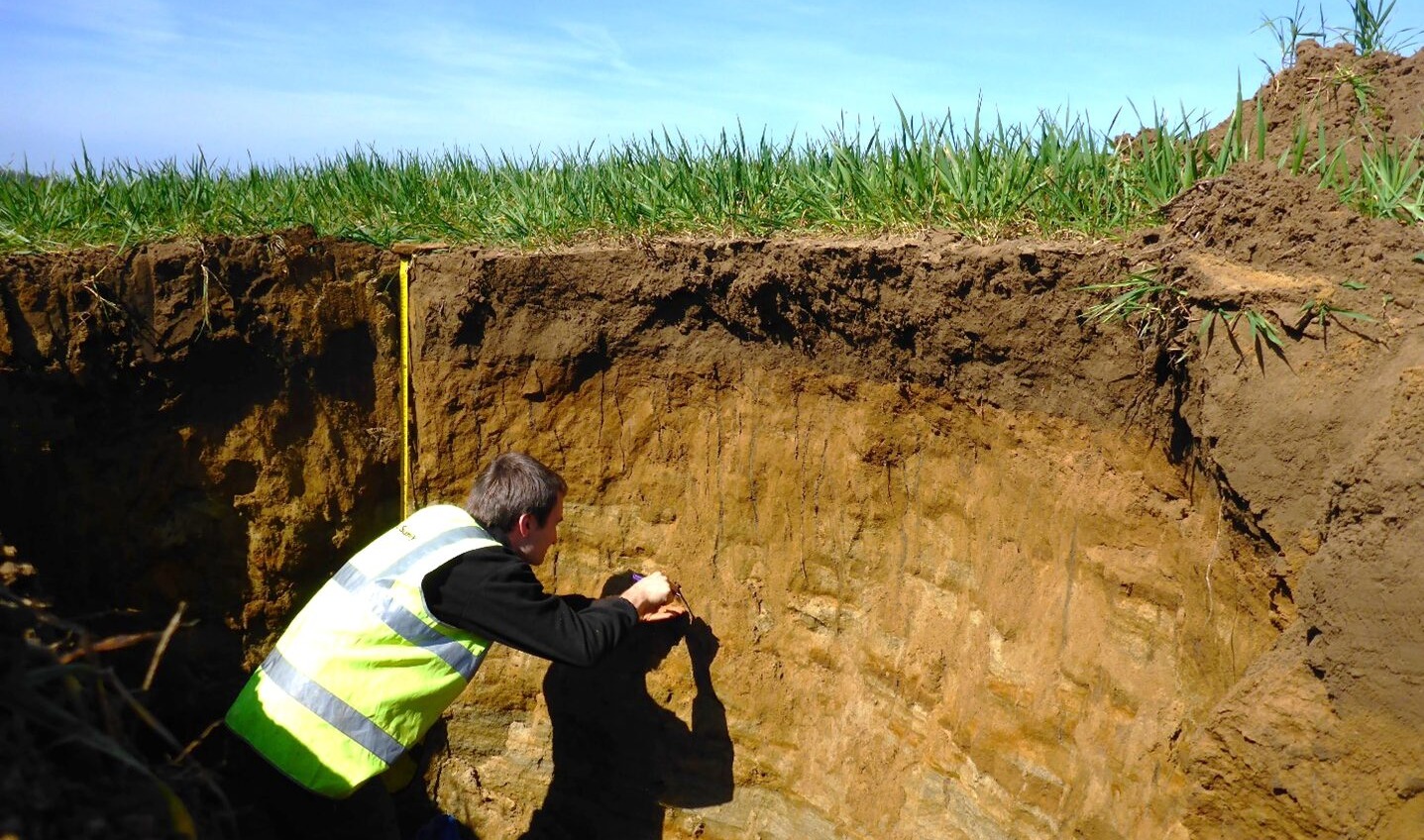Putting their Trust in Environmental Water Management student Jessica
21/07/2016

I’m researching the ecological status of Weston Turville Reservoir near Aylesbury in Buckinghamshire, working alongside the Canal and River Trust.
Previously used to supply water to the Wendover Arm of the Grand Union Canal, the reservoir is now mainly for environmental and recreational use. With an active sailing club and a successful angling association, the reservoir provides open water, woodland walks and reed beds within the Chilterns Area of Outstanding Natural Beauty.
Managed by the Canal and River Trust, in association with the Bucks, Berks and Oxon Wildlife Trust and Natural England, it was designated a Site of Special Scientific Interest (SSSI) in 1976. The protected habitats consist of reed beds, tall fen and willow carr, most of which have been in decline throughout the UK as a result of land drainage and requirements for increasing agricultural production. These habitats support diverse macroinvertebrate populations which provide food for up to 46 bird species known to breed at the site. The reservoir supports a large number of overwintering shoveler (a breed of duck) for which it is of national importance.
In recent years, a decline in the water quality has been suspected. With lack of dredging, sediment deposition has led to gradual reed encroachment of the open water. Populations of birds visiting the reservoir appear to be in decline, as do macroinvertebrate populations. The fish stocking levels are also of concern and so a general investigation of the water quality is required in an attempt to explain how the reservoir is currently functioning.
 The Canal and River Trust aims were to determine the state of the reservoir, look at a number of different trophic levels and also to improve the general knowledge of the site. The potential scope was too broad for a four-month research project, so it was decided that the focus should be on a few key factors which could then be used to identify issues with the state of the reservoir.
The Canal and River Trust aims were to determine the state of the reservoir, look at a number of different trophic levels and also to improve the general knowledge of the site. The potential scope was too broad for a four-month research project, so it was decided that the focus should be on a few key factors which could then be used to identify issues with the state of the reservoir.
Due to their effect on the ecology of a site, sediment deposition, sediment phosphorous concentrations and water quality were chosen to be investigated. Species composition and distribution of macrophytes will also help to understand the state of the reservoir and the potential for its recovery. These parameters would then potentially enable identification of key areas where future management of the site should be focused.
This project is particularly interesting due to the number of parameters which require investigation and the number of different user groups and management bodies involved. The different requirements of each user group results in conflicts of priorities of management of the water body. Maintaining the reservoir for the SSSI designation, good water quality for fish, birds and macroinvertebrates, and also the open water for sailing do not always result in a simple management plan.
At this early stage in the project, I have found it very interesting to understand how the Canal and River Trust works and manages the site. Coordination and good communication with the Bucks, Berks and Oxon Wildlife Trust for onsite management and Natural England ensures that the site is well looked after, and communication with the user groups provide regular updates on the state of the site.
Working on this project has given me a good insight into what it would be like to work in a number of roles, and I now appreciate the challenges of maintaining a SSSI reservoir. It’s been reassuring to have the support of the Canal and River Trust, and enabled me to connect with the different user groups, and also be provided with historical data from within the organisation. Offers of help from experts from the Canal and River Trust will enable me to learn new techniques and methods and also improve the quality of the final report.
Coming from a biological background, the course at Cranfield has enabled me to broaden my understanding of the different factors influencing the state of the environment. To have the opportunity to work alongside different organisations provides an opportunity to understand how they work, the collaborations between other bodies and the different job roles which are available for the future.
Jessica Fennell, MSc in Environmental Water Management
Categories & Tags:
Leave a comment on this post:
You might also like…
From the control tower to Cranfield: My journey to shaping the future of airports
Hi, I’m Karima Lakouz, and this is the new me! I’m a Moroccan full-time student, aiming to graduate in 2026 with an MSc in Airport Planning and Management from Cranfield University. ...
Earth’s silent hero: Why soil is finally stepping into the spotlight
As a Soil Scientist, the start of December is always an exciting time of year, specifically World Soil Day (5 December). This year, it’s doubly special, because we are also celebrating the 75th Anniversary ...
How do I reference social media… in the NLM style?
Although it’s not considered to be scholarly material, you may find information on social media useful for a piece of academic work. It may be that a particular post on X or Facebook illustrates or ...
Want to improve your reading skills?
Are you starting to read through the mountains of journals, books or articles for your project or on your course reading list? Let’s start with a few myths about the reading process: You need to ...
Introducing… Bloomberg Spreadsheet Analysis (BSA)
Want to take your Bloomberg data skills in Microsoft Excel to the next level? The new Bloomberg Spreadsheet Analysis (BSA) certification is designed to help you do just that. Created by Bloomberg, BSA is an ...
Bridging Science and Supply: My Journey at the GCSG European Knowledge Forum 2025
Earlier this year, I had the honour of being selected as one of the 2025 Global Clinical Supplies Group (GCSG) European Scholarship Winners, an opportunity that took me to Budapest, Hungary, for the GCSG ...






